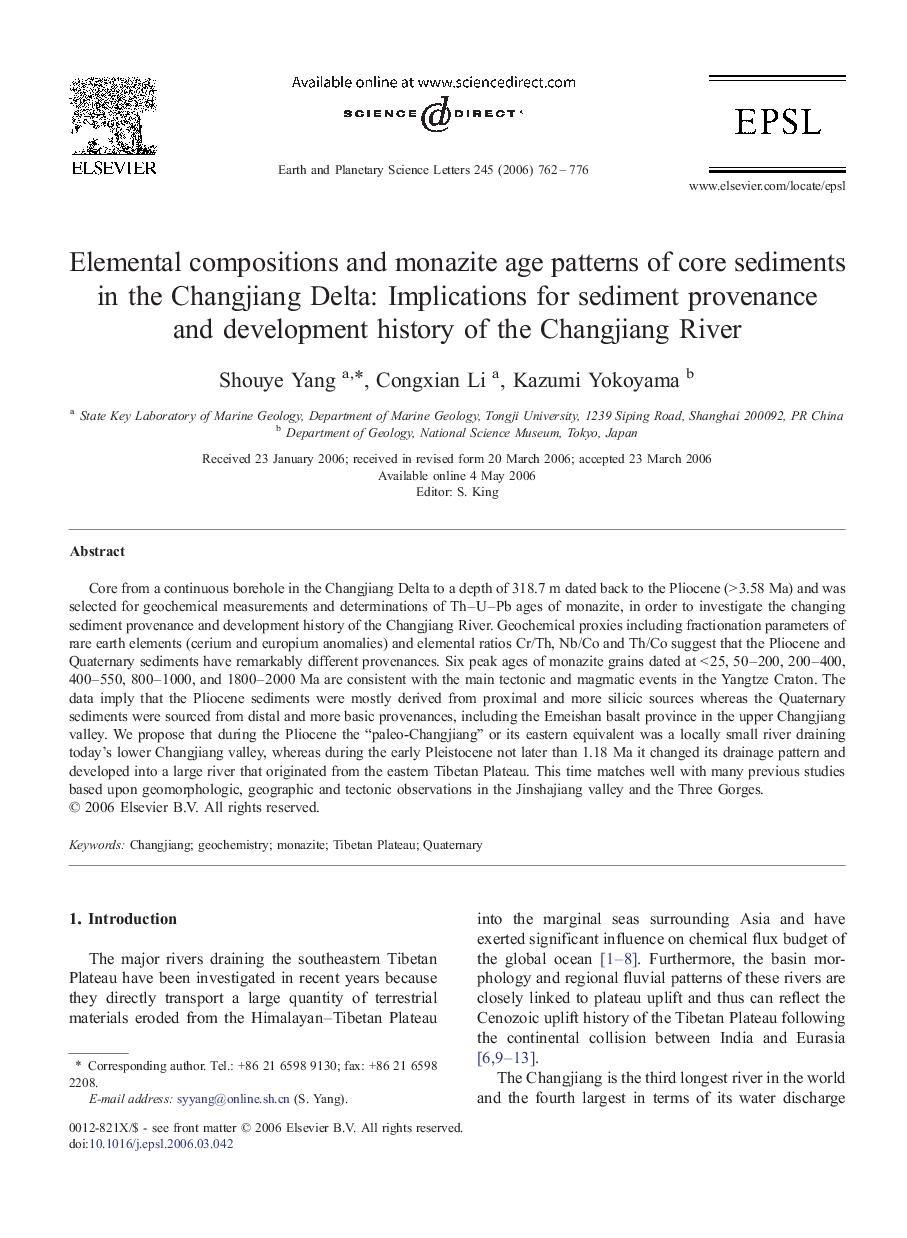| کد مقاله | کد نشریه | سال انتشار | مقاله انگلیسی | نسخه تمام متن |
|---|---|---|---|---|
| 6431179 | 1634944 | 2006 | 15 صفحه PDF | دانلود رایگان |

Core from a continuous borehole in the Changjiang Delta to a depth of 318.7Â m dated back to the Pliocene (>Â 3.58Â Ma) and was selected for geochemical measurements and determinations of Th-U-Pb ages of monazite, in order to investigate the changing sediment provenance and development history of the Changjiang River. Geochemical proxies including fractionation parameters of rare earth elements (cerium and europium anomalies) and elemental ratios Cr/Th, Nb/Co and Th/Co suggest that the Pliocene and Quaternary sediments have remarkably different provenances. Six peak ages of monazite grains dated at <Â 25, 50-200, 200-400, 400-550, 800-1000, and 1800-2000Â Ma are consistent with the main tectonic and magmatic events in the Yangtze Craton. The data imply that the Pliocene sediments were mostly derived from proximal and more silicic sources whereas the Quaternary sediments were sourced from distal and more basic provenances, including the Emeishan basalt province in the upper Changjiang valley. We propose that during the Pliocene the “paleo-Changjiang” or its eastern equivalent was a locally small river draining today's lower Changjiang valley, whereas during the early Pleistocene not later than 1.18Â Ma it changed its drainage pattern and developed into a large river that originated from the eastern Tibetan Plateau. This time matches well with many previous studies based upon geomorphologic, geographic and tectonic observations in the Jinshajiang valley and the Three Gorges.
Journal: Earth and Planetary Science Letters - Volume 245, Issues 3â4, 30 May 2006, Pages 762-776